Hidden Springs Homestead may earn a commission for purchases made after clicking links on this page. Learn More.
Anyone can learn how to grow onions from sets in a backyard vegetable garden. Onions are one of the easiest vegetables to grow in either raised beds or the home garden. And since onions are so useful in the kitchen, it only makes sense to grow them.
RELATED: Even if you’ve never gardened before, this Vegetable Gardening for Beginners Ultimate Guide is for you! Learn everything you need to know from over 60 resources, all in one place, to be a successful gardener, including improving soil, cover crops, warm and cool season crops, organic amendments, fertilizing, watering, and so much more.
Types of onions
Have you ever tried growing onions and just wasn’t successful? Maybe the bulb didn’t grow? If so, it is well possible that you tried growing the wrong type of onion for the area you live in. Onion types are defined by the number of hours of daylight required for them to grow. They can be broken down into 3 different types:
Long Day Onions
Long-day onions require at least 14-16 hours a day of sunlight to grow bulbs. They grow best in northern areas such as Canada. Long Day Onions are low in sugar and high in sulfur which makes them store well for long periods. Of course, they are also great for immediate use too.
Short Day Onions
Short-day onions need only 10-12 hours a day of direct sunlight to grow bulbs. They grow best in the southern hemisphere. They are very sweet in flavor. Since they are so sweet and also full of water, short-day onions do not store well for the long term. They are more for immediate cooking.
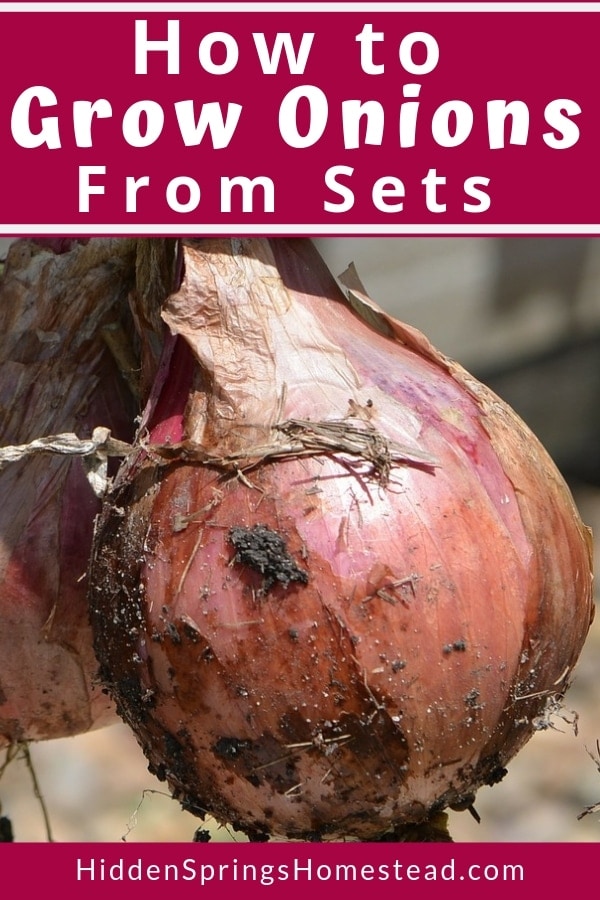
Intermediate (Neutral Onions)
The 3rd type of onion is just as it is called, neutral or intermediate. They are not picky as to how many hours of sunlight they receive. These types of onions will grow well in both the northern and southern areas.
How To Grow Onions From Sets
Best Soil for growing onions
Soil preparation for onions is easy. They will grow in almost any type, such as sandy or loamy to even in clay. Growing onions will also benefit from soil that has been worked and has had compost added to it.
Soil should drain well, be nice and loose, and be rich in nitrogen and phosphorus. The easiest way to increase nitrogen is to work in about 2 inches of rich organic compost. Growing onions need a pH range of 6.0-7.0
When to Plant Onion Sets
Is it too early to plant onions? This answer really depends on where you live. Onion sets can be planted in early spring as soon as the garden soil has thawed and can be worked. Of course, the specific month will vary depending on your location.
Here in Tennessee, we can plant onion sets in mid-February into early March. In the northern areas, onions can be planted late March to early April or later.
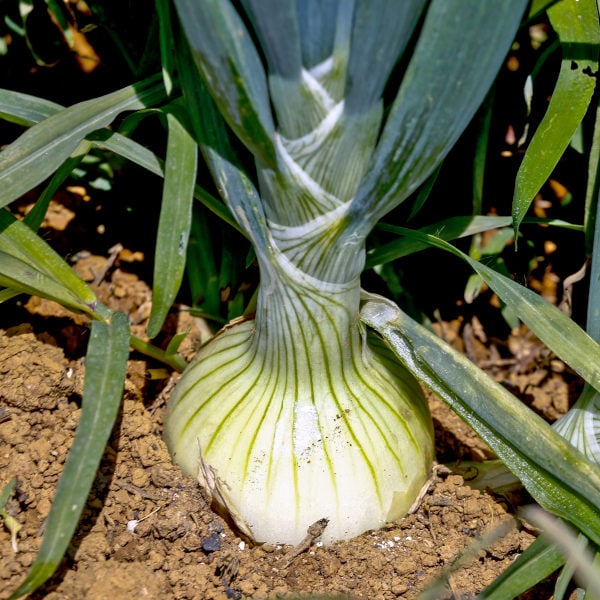
How to Prepare Onions sets for planting
How do you prepare onion sets for planting? Onion sets can be planted without soaking, but if soaked, they will sprout much faster. The best thing to soak them in is compost tea.
Put onion sets in compost tea and let set for 24 hours prior to planting. Drain and plant immediately. They will be well hydrated and should be planted into garden soil quickly.
How to Plant Onions from sets
Onions are best started outdoors because it is much easier on their root system. Of course, they can be started indoors, from seeds, if you prefer. This should be done 8-10 weeks prior to your last frost date.
Tip: Planting onions closer together will force them to mature more quickly, and wider spacing will slow down their maturity time but grow larger onions. So what does this mean for you?
Onions are slow to mature. If you are an eager gardener, like me, and want to get out there as soon as the soil can be worked, you can plant onions sets farther apart. And they will still have time to mature into large onion bulbs.
If you procrastinated or decided to plant onions at the last minute, maybe it’s not too late. Planting them closer together will force them to mature more quickly. But the onions will be smaller in size. But small green onions taste great too!
The best-size onion sets to plant are about 1/2 inch in diameter. If they are much larger than this, they will likely bolt. We will cover bolting a bit later.
Bolting simply means the onion produces a flower stalk, at which point it will stop growing the bulb and put all its energy into the flower. You should go ahead and harvest this onion and eat it. It will not store and will no longer grow.
RELATED: Garden Mapping: How to Plan and Grow Your Best Garden Ever!
Onion sets should be planted 1 1/2 inches – 2 inches deep in the soil, spacing them 3-4 inches apart. Don’t put them too deep into the soil; this will hinder their ability to grow and expand into large onions. The top of the onion set needs to be above the soil level. Space rows 6 inches apart.
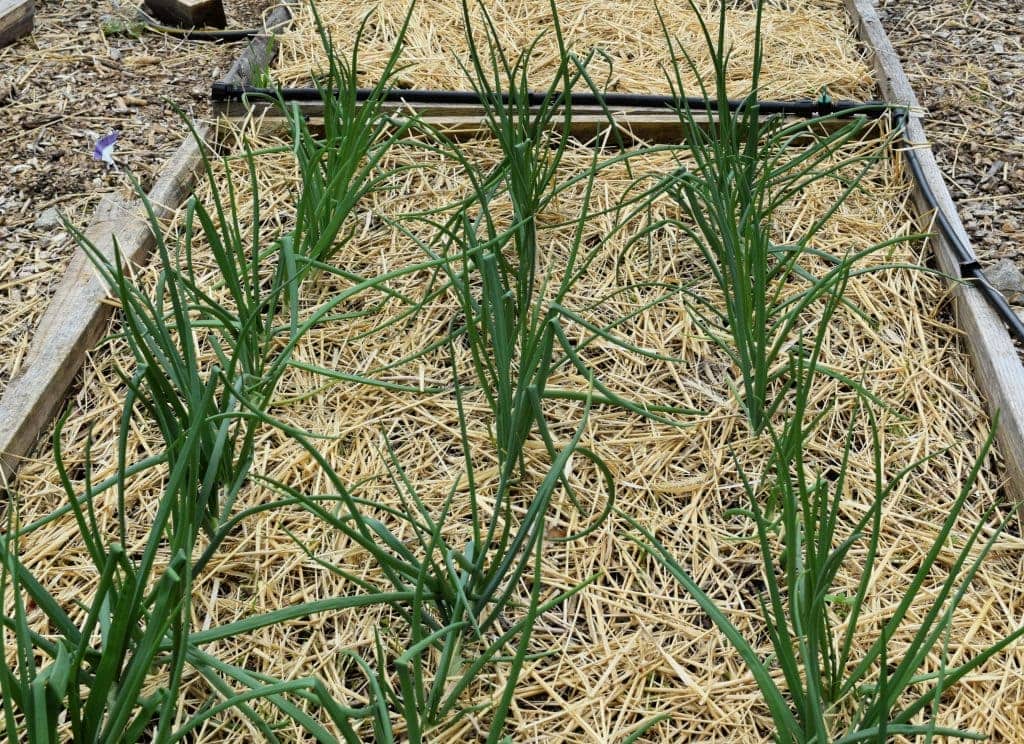
RELATED: Take the guesswork out! Use the easy formula worksheets in The Canning Garden Workbook (printable) to figure out how much to plant, for canning, to feed your family for a full year!
Freeze protection
Since onion sets can be planted so early, feel better knowing that a little frost will not harm them. They can take it!
But if a hard freeze is expected, newly planted onion sprouts should be protected. So how can you protect newly planted onions from the cold? An organic mulch works great. Some good ones are:
- Pine Needles
- Grass Clippings
- Straw
- Wood bark
- Cover with landscape fabric
- Burlap
Also, if you have enough notice before the freeze, water them well. Moist soil will stay warmer than dry soil. Once the temperatures begin to warm back up, the covering or mulch needs to be pulled back from them.
How long does it take onions to grow?
As I mentioned a bit ago, growing onions will take a while.
Onion sets will sprout in 7-10 days. You should see these awesome little green sprouts coming from the tops of the onion sets you placed in the soil. Of course, soil temperatures will affect this.
For instance, cooler soil temperatures below 55°F will slow sprouting to 10-14 days. But if warmer soil temperatures around 65-75°F will speed up sprouting, you can see them within 4-6 days.
And then, in about 25-30 days, you can be enjoying green onions for your family dinner. The time for onions to fully mature and grow is 125-175 days depending on the type of onion.
How to Water Onions
How often should you water onions? When you have newly planted onion sets, they need to be kept consistently moist until they “take hold” in the soil. By take hold, I mean the roots grow and reach out into the soil.
Onions need a moderate 1-2 inches of water a week. A good rule of thumb is if tops are totally dark green they are well hydrated. The tops are a great indicator of water needs. If the soil feels dry, water them immediately.
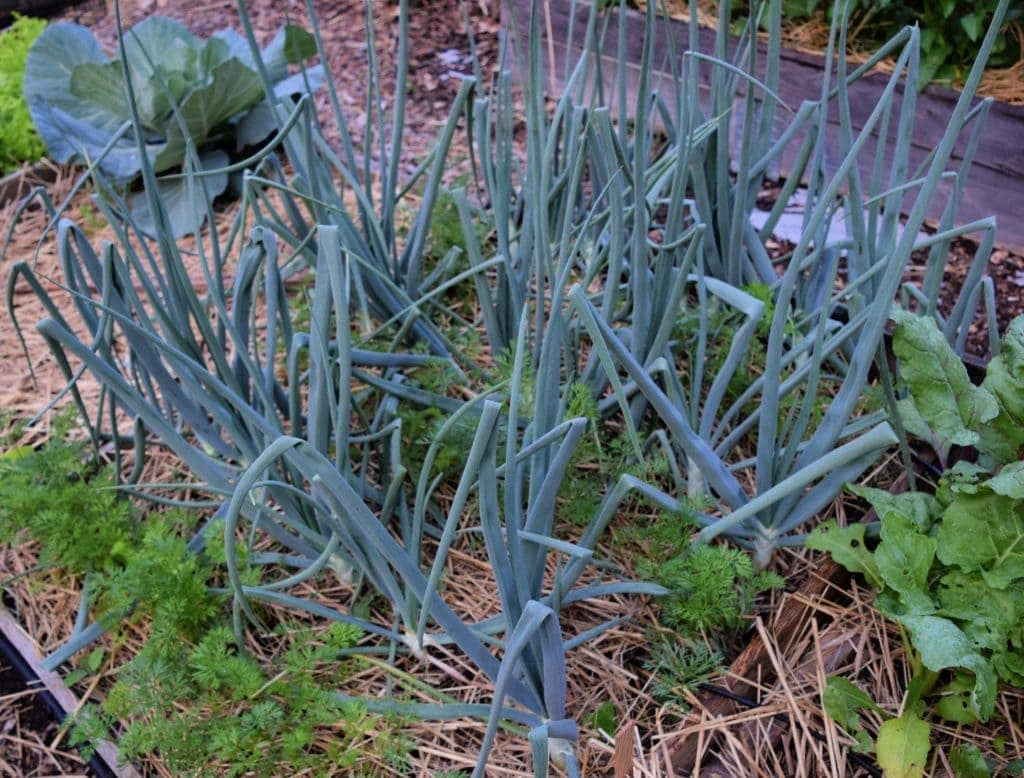
Continue to water weekly during growing days, keeping an eye on their lush and gorgeous green leaves. A great way to water onions is by using a drip irrigation system that will place the water directly into the soil and down into the roots.
I use an irrigation system from Drip Depot and love it, and I’d so recommend them! They do nothing but irrigation systems and are very helpful. I purchased one specific to raised beds.
How to Fertilize Onions
Growing onions doesn’t require a lot of fertilizer, but a good fertilization program will help to grow much larger onions. So curious about how to make onions grow larger? Think of onions as a leaf plant that needs a good amount of nitrogen and phosphorus on a consistent basis.
Onions are heavy feeders, and a moderate NPK program will be very helpful. They will also benefit from enriched compost added to the soil.
Since they are heavy feeders, the best organic fertilizers for them are bone meal and blood meal. These will provide needed nitrogen and phosphorus to grow larger onions. Mix in equal parts and side-dress onions with about 2 cups per 10 feet row. Do this every 2-3 weeks during their growing stage.
If you can’t find blood meal, another organic fertilizer alternative is alfalfa meal.
How much sunlight do onions need?
In general, onions prefer full sun but will tolerate a bit of shade. Shading will affect the growth, and your onions will be smaller. Ideally, they should get 10-12 hours of full sun a day. But, if you are growing long-day onions, you will need 14-16 hours a day.
Here in Tennessee, I grow short-day onions that need only 10-12 hours.
How to Harvest Onions
Harvesting onions are one of my favorite vegetables to harvest. They rank right up there with harvesting carrots. Pulling all those gorgeous large onions out of the soil is so exciting! Love the surprise each time you see the whole thing for the first time.
How do you know when onions are ready to harvest? When they have fully matured, the onion leaves will flop over at the neck, and they will begin to turn yellow and die. Don’t worry; this is completely normal. If most have not fallen over, go ahead and bend them down to stop growth.
Once all the tops have died and turned brown, it’s time to harvest. It’s best to harvest onions on a bright sunny day. Gently loosen the soil around the onion, grasp hold of the neck of the stem, and gently wiggle and pull upward. You’ll get this great surprise of a homegrown onion appearing from the soil.

How to Dry Onions
Clip off the roots and the stem to about 1 inch long. If you plan to braid the onions, do not cut the tops off. Gently lay them on top of the ground in the hot sun to begin drying. Fresh onion bruise easily, and this will encourage rot, so be gentle.
They should be left to dry for several weeks in a hot, dry area prior to storage. Don’t allow them to get wet while drying.
A screen placed outside in the sun, off the ground, works great for drying. Air is able to circulate all around the fresh onions, and it can be moved indoors during wet weather.
How to Store Onions
Once dry, remove any loose skins and place them in mesh bags or nylon stockings in a cool, dry area. Dried onions should be stored in a dry area that is 40-50°F (4-10°C).
If well-dried and kept in a cool area, onions will store for 3-5 months.
Summing it all up
This may seem like a lot to take in. Trust me, growing onions from sets is easy to do. Here’s a round-up of the steps to take. Just follow these simple tips, and you’ll do great!
- Onions are not picky about the type of soil. It just needs to be loose, well-drained, and high in nitrogen and phosphorous.
- Plant onions as soon as the garden soil is workable
- The best size onion sets to plant are about 1/2 inch in diameter
- Soak onions sets overnight in compost tea
- Place onions sets in soil 1 1/2-2 inches deep, 4 inches apart. Rows should be 6 inches apart.
- Keep onions watered with 1-2 inches of water during the growing stage
- Fertilizer with moderate nitrogen and phosphorus every 2-3 weeks during the growing stage
- Onions are ready to harvest when tops fall over and die
- Pull from the soil and dry for several weeks. Handle gently not to bruise
- Store in a cool, dry, well-ventilated place
So, are you all excited and ready to grow onions from sets in your raised beds or backyard garden? I know if I can do it, you can too.
What type of onion do you need for the area you are in?
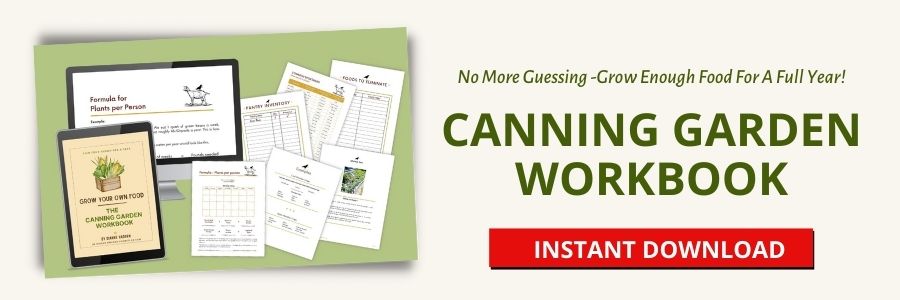
More Gardening Tips
Connect with Hidden Springs Homestead!
Be sure to follow me on social media so you never miss a post!

Dianne Hadorn is the owner of Hidden Springs Homestead nestled in the hills of East Tennessee. She is a Master Gardener and enjoys helping others learn how to grow and preserve their own food and sharing tips for living a more self-sufficient lifestyle.
